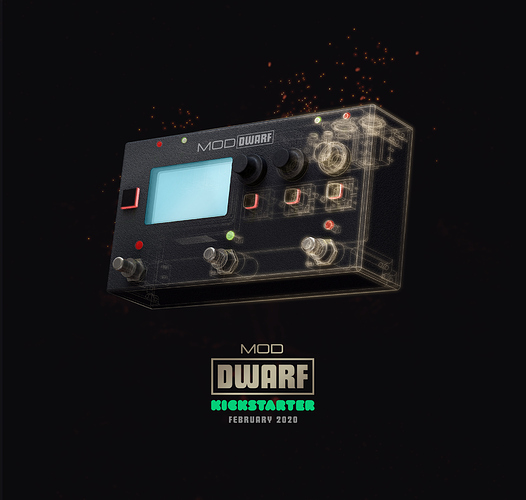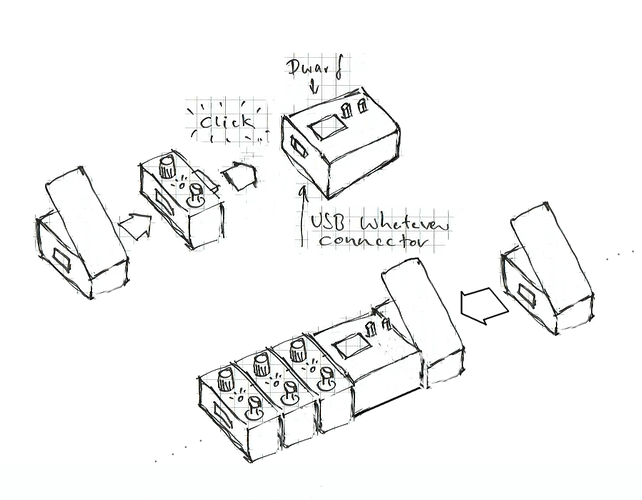Happy 2020 dear members of the MOD community!!!
This is going to be a very exciting year for MOD Devices. Many things are happening both on stage and backstage and you will all profit a lot from them all. Our team is growing and we entered the year at full throttle.
I am writing this post to tell you about the MOD Dwarf, our latest project announcement, which I had already hinted in my previous update.
The Dwarf shares many similarities with the MOD Duo, but it bears several improvements
-
We are bringing the Dwarf to life via a Kickstarter campaign, planned to go live in late February 2020.
-
The Dwarf is a floor unit, aimed at guitarists and bassists, but of course, capable of being used by a myriad of other instruments (It’s a MOD device that we’re talking about, after all
 )
) -
It has two adjustable audio inputs and outputs plus headphones, full MIDI connectivity, Control Chain, USB Host, and USB Device.
As the other MOD processors, it supports the MOD platform from the graphical editor for the creation of virtual pedalboards to the Plugin Shop and the Pedalboard feed.
And the similarities stop here 
The Dwarf is the result of almost 10 years of collected experience of embedding a computer inside a pedal-like enclosure, being the last five years a context of mass production with a diverse population of users. It carries the joy of many hits and the painful lessons of our mistakes, representing a step up in many different aspects of product design that range from usability to manufacturing.
Here are some of the results from such improvements:
It is small
And it has a horizontal form factor, easier to fit on your pedal train. The connections are all in the back face, enabling maximum compaction of your board.
It is smart to control
The controller offers a combination of knobs, pushbuttons and footswitches that allows great workflows for configuration and adjustment. Monitoring is made via a graphical display plus multiple RGB LEDs.
It is powerful
With a 64bit Quad-core ARM CPU, there is enough processing power to run the most demanding plugins and the most complex virtual pedalboard.
It is cheaper
When hitting the stores, the Dwarf is planned to retail at 299€. There is probably nothing in the musical gear market today that offers so much “bang for buck”.
My main objective with this post is to involve you, the members of our community, in the process of making the Dwarf a reality. The idea for such a device is not new in the company and since late 2018 we have been steadily developing the concept and the basic architecture.
There is a landing for the MOD Dwarf and it will be updated regularly during the next months: https://www.moddevices.com/moddwarf
Subscribe to the Dwarf mailing list to keep up with the most up-to-date information about the campaign. Share it with your friends and fellow musicians. Let’s make people hear and talk about it.
We are now entering “pre-campaign mode” and your involvement is of great value for us. We are very interested in hearing what you have to say in order to pull off the best product we can. As MOD users, you all surely have great insights that emerged from the experience with our existing products.
Such a step up immediately raises the question: what about the Duo and the plans for its hardware update?
I’ll update this matter in this other forum thread: CPU upgrade?
The update of the Duo is a separate topic and I want to keep the discussion about it separated from the Dwarf.
This is the start of a very exciting process and I welcome you all on board.
Let’s once again step onto the future!



